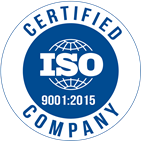Carburizing Treatment
Carburizing is a process where carbon molecules are forced into the surface low-carbon steels so they can be surface hardened. This process is done in a carbon monoxide environment which allows case depths of up to .100″ to be done for items such as gears. After carburizing the steel is heat treated in an open air furnace, or a vacuum furnace, to obtain required surface hardness. A hard carburized surface is used when the interior of a component needs to remain ductile and shock resistant. Also called case hardening if the carburizing process is followed by an immediate quench in oil.


